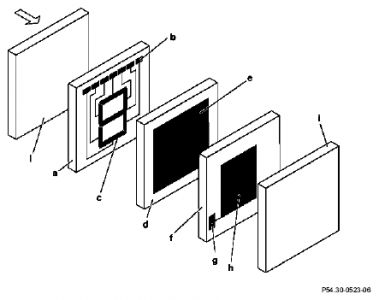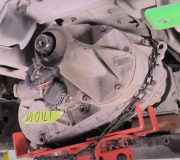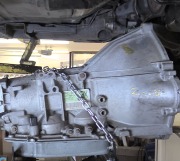You will need to replace the LCD i'm afraid ..this is a common fault on this type of display module.
Liquid crystal display (LCD), location/task/function - GF54.30-P-3015A
MODEL 129, 140 as of 1.6.96, 163, 168, 170, 202 as of 1.8.96, 208, 210 as of 1.6.96, 215,220
Task
The liquid crystal displays (LCDs) can display numbers, letters and other symbols. They are therefore used as the output devices of electronic systems. They are increasingly used as a replacement for the conventional analog indicating instruments and indicator lamps.
Operating principle
The operating principle of the liquid crystal display is explained using a seven-segment display as an example (see illustration).
A spacer frame (d) which surrounds a thin layer of liquid crystal (e) is sandwiched between the glass plates (a) and (f). Transparent electrodes (segments) are attached to glass plate (a) in the shape of the desired characters.
Fig. 68: Identifying Liquid Crystal Display (LCD)
Courtesy of MERCEDES-BENZ OF NORTH AMERICA.

The transparent counter-electrode (h) is on glass plate (f). If a voltage is applied between the contact (g) of the counter-electrode (h) and one or more contacts (b) of the segmented electrodes (c), the optical properties of the liquid crystal between the counter-electrode (h) and the energized electrodes (c) change. If the LCD is viewed in the direction of the arrow, the energized electrodes (c) appear dark and are thus visible. By actuating the appropriate electrodes (c) it is possible to display any number.
The liquid crystal display also has 2 polarization filters (i). These types of display have a better contrast and require a lower supply voltage (approx. 1.5 - 5 V).
Other characters can also be displayed if the appropriate electrode layout or shape is selected. Strip-type electrodes are usually used in the multifunction display (A1 p13). Here strip-type electrodes are attached to both of the glass plates (a) and (f). The strips on glass plate (a) are arranged vertically to the strips on glass plate (f). This arrangement allows individual dots (pixels) to be actuated. If different dots are actuated repeatedly in sequence at a sufficiently high speed, it is possible to produce almost any "image".
Wednesday, March 3rd, 2010 AT 5:19 AM








